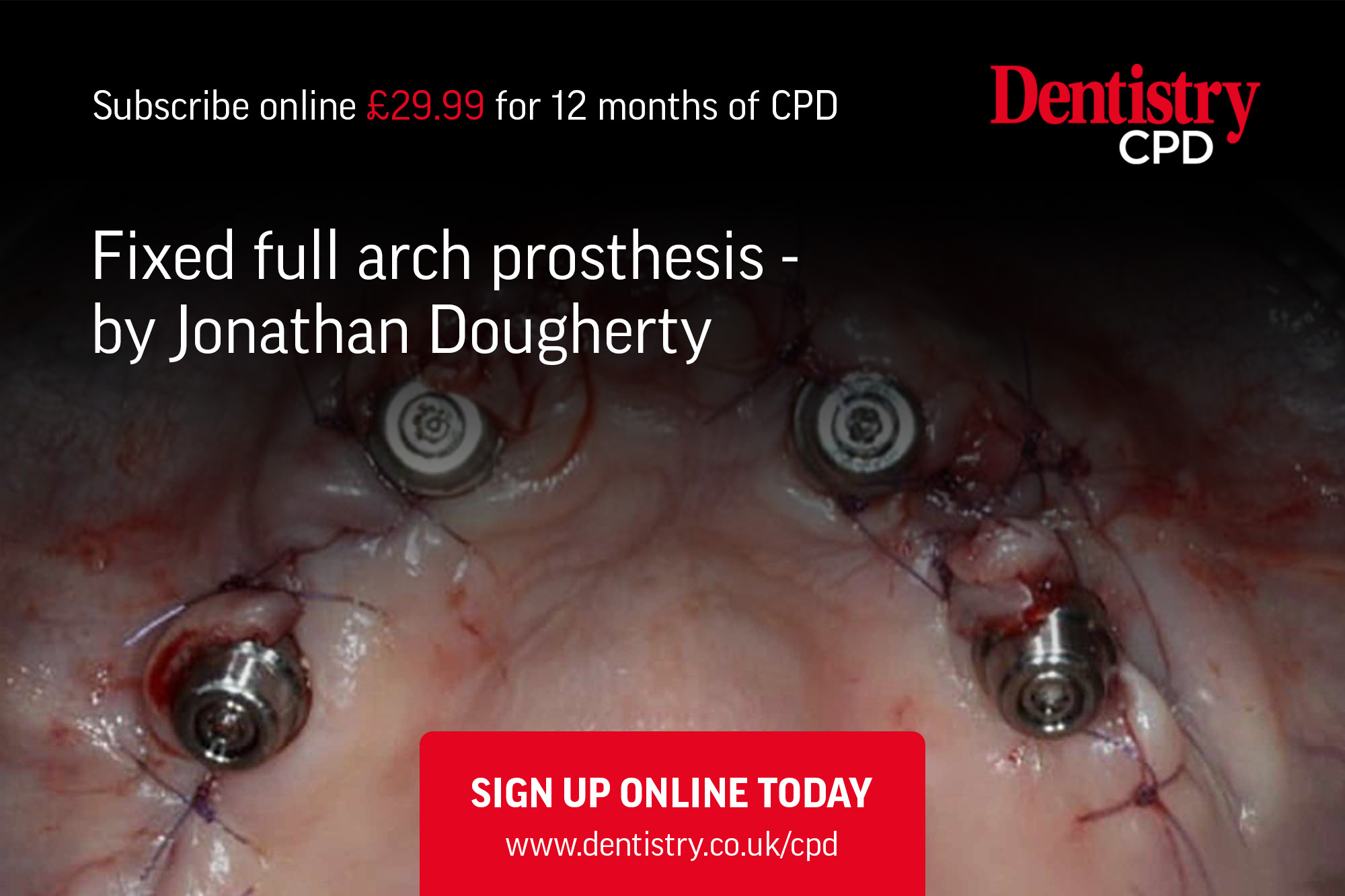
Jonathan Dougherty shares a case that provided a fixed full arch implant-retained prosthesis on four dental implants in one day.
A 58-year-old female patient presented at the practice with failing upper dentition (Figures 1 and 2*).
She wished to explore some options to address the aesthetics and the function, because she was finding it difficult to eat.
In addition, she was generally fit and well, and had no medical conditions. She was a non-smoker and a non-drinker. An intraoral and extraoral examination was undertaken, which revealed that she had good oral hygiene.
All remaining teeth were failing with a hopeless prognosis, which included the UR1, UR2, UR3, and UL1, UL2, UL3, UL4.
The UR1, UL3 and UL4 had existing amalgam and composite restorations. All other upper dentition was missing.
The patient was hoping for a fixed solution. So, the various treatment options were discussed with her. These were to either:
- Do nothing
- Provide a removable partial denture
- Provide a removable full denture
- Provide a full arch implant-retained fixed prosthesis.
The two latter options would require the extraction of the existing teeth.
All the benefits and risks of each of the treatment options were discussed with the patient. She wished to proceed with a permanent fixed solution, so the full arch dental treatment was explored.
Treatment planning
Having made her choice, we proceeded on that basis, and completed a comprehensive assessment to inform our treatment plan.
Firstly, we undertook a CT scan to assess her bone volume and bone quality.
In this case, the patient had high-quality volume and density and was therefore suitable for full arch treatment without the need for bone augmentation.
From here, intraoral scans were taken using the 3shape Trios scanner, alongside some clinical photographs.
Extraoral photos are important, as they are used to assess how high the patient’s smile line is. This tells us how much alveoloplasty we must undertake to allow sufficient restorative thickness for our final prosthesis, and to ensure we are able to hide the transition line behind the patient’s upper lip.
This is important for aesthetics as, when she smiles, we won’t be able to see the transition line of the final restoration.
*To read the rest of this article, view the photographs and gain CPD, visit cpd.dentistry.co.uk/courses/fixed-full-arch-prosthesis.


